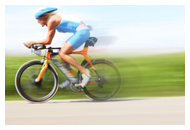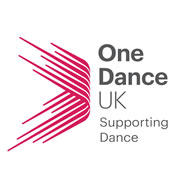Cycling injuries are not just something that is sustained from falling off a bike. Often aches, pains and injuries can occur as a result of the body position on the bike, incorrect bike set-up, or through overuse / inappropriate training, which can all place significant strains on joints and tissues.
Good 'bike fit' can prevent such injuries from occurring and long term strains on your body... AND improve your cycling efficiency, speed and even PB times.
 A good cycling shop can advise you how to set up your bike correctly to achieve good bike fit. Everyone's body is different from torso length, leg length and the ratio between the two, therefore your bike fit is unique to you. Correct bike fit should be measured whilst you are dressed in your cycling gear to gauge the measurements, therefore taking into account the shoes you will be cycling in and the flexibility of the clothing etc.
A good cycling shop can advise you how to set up your bike correctly to achieve good bike fit. Everyone's body is different from torso length, leg length and the ratio between the two, therefore your bike fit is unique to you. Correct bike fit should be measured whilst you are dressed in your cycling gear to gauge the measurements, therefore taking into account the shoes you will be cycling in and the flexibility of the clothing etc.
It is also worth remembering that bodies are often asymmetrical! One side of your body may be a different length, position and flexibility to the other side therefore an in-depth assessment of the positional needs of your body when on your bike is essential to preventing stresses and strains in your body.
You can learn about correct bike fit by visiting www.bikedynamics.co.uk where you can view a video discussing how to set your bike up correctly.
Common Cycling Injuries and Complaints
These types of problems can be prevented by wearing cushioned gloves, padding the handlebars sufficiently, consciously relaxing the shoulders, elbows and grip when cycling, and removing hands from handlebars and sitting up when stopping at lights etc.
Should you be experiencing any niggles or pains during or after cycling, we would be happy to assess and provide physiotherapy treatment and advice for any cycling-associated injuries.
We also offer a biomechanical screening assessment designed to fully assess your body from top to toe with regard to joint mobility, tissue and muscle flexibility, alignment and symmetry – this can be useful in identifying areas that may be prone to cycling-related injuries. Should you require this specialist assessment or any further information regarding our services, please click here or telephone our Clinical Director Sarah Joice on 07908 684441.
Neck Pain
Often caused by holding the head in 'protraction' (poking chin / head forwards) and extension (head held slightly backwards), adopted when cycling due to a combination of the position of the handlebars relative to the shoulders and in order to see the road. Road bikes often cause this problem more than mountain bikes due to the lower position of their handlebars in the 'race' position. Also caused by having too long a 'reach' on your bike.
Shoulder Pain
May result from too long a 'reach', too low a handlebar height or simply from long periods of cycling. A sustained forwards position of the shoulders can lead to impingement syndrome of the shoulder (pain reported from the front of the shoulder) or aching from the shoulder blades and middle of the back.
Back Pain
Sustained by long periods of hunching over your bike with a flexed position of the spine. This can be exacerbated by incorrect seat position or too low a handlebar position.
Pelvic and Sacroiliac Joint Pain
From incorrect seat height or an uneven cycling gait. For example one leg may be pushing down harder through your stroke than the other, causing that leg to work harder leading to unequal stresses through each side of the pelvis.
Knee Pain
Often linked to incorrect seat height which increases the stresses through the knee joint and structures at the front of the knee, and incorrect pedal position or cleat angle leading to incorrect foot positioning and resultant abnormal strains through the knees.
Foot Numbness and Pain
Can result from wearing too small a cycling shoe or from shoes with soles made from softer material. Stiffer soles ensure that the pressure when pushing through your foot is evenly taken through the whole foot and prevents repetitive 'flex' though one area of the foot. In turn this can accommodate a higher gear usage and faster RPM without causing strains through the feet.
Hand Pain and Numbness
Caused by continuous pressure through the palms against the handlebars or too tight a grip. Long periods of gripping the handlebars tightly with the hands, and or repetitive use of the brakes (particularly in mountain biking) can lead to overuse of the muscles of the forearm, and repetitive strain of the long finger flexors and intrinsic muscles of the hand. Numbness experienced in the hand during or after a ride can be caused by 'ulnar nerve neuropathy', a condition resulting from continued compression of the ulnar nerve at the hand and wrist. Symptoms can be reported as tingling / numbness felt in the ring and little fingers and along this side of the palm. 'Drop down' handlebars placed in the lower position can increase the stretch through the ulnar nerve causing the above symptoms.
Carpal Tunnel Syndrome
Carpal Tunnel Syndrome can also be caused from increased pressure through the centre of the palm, resulting in pain and sensory changes affecting the thumb, index, middle and ring fingers.










